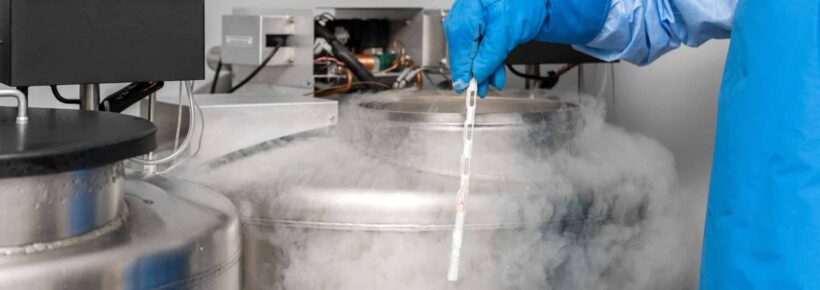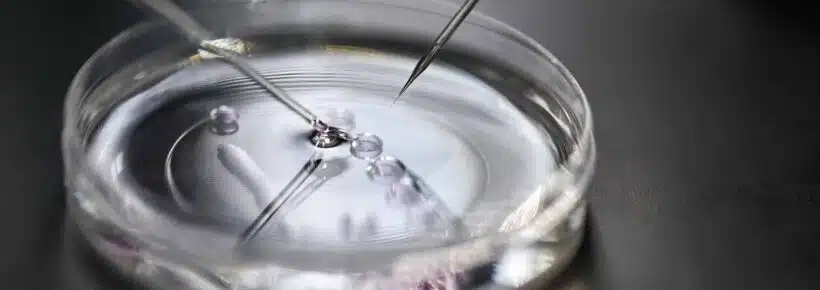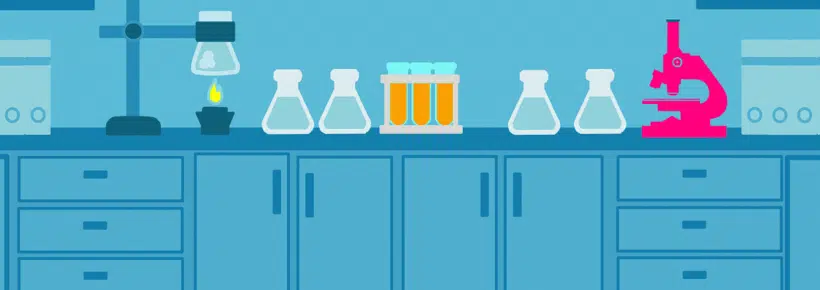
The very probability that we may be faced with a human person in the full sense constitutes, in my opinion, an absolute veto against any type of [in-vitro] experimentation.
― Father Bernard Häring.1
Introduction
Assisted reproductive technology is one of the most complex moral fields debated today. It is actually an aggregation of several distinct issues — the question of a “right” to a child, the high costs and high failure and complication rates of ARTs, the field’s continuing scandals, and the many doors such procedures throw open to abuse.
Fortunately, there are several alternative methods by which infertile couples may have their own natural children. These methods are not only more effective than the most common artificial methods, they are acceptable to all religions. Unhappily, very few physicians in the field know of these alternatives, and even fewer practice them.
In general, it seems that bioethicists, technocrats, “family planners” and “sex educators” no longer glorify the way human reproduction should be (sex resulting in babies). Instead, they extol sex not resulting in babies (by means of contraception, abortifacients, sterilization and abortion) and babies resulting without sex (by means of artificial insemination, embryo transfer and IVF).
Among reproductive scientists, there has been a fundamental shift in philosophy from assisting the begetting of children in a loving family environment to manufacturing a product ― and the “manufacturers” can dispose of this “product” if its quality does not meet their high standards.
The Catholic Church on Reproductive Technology
The Catechism of the Catholic Church [¶2376-2377] describes the major moral problems of most of the assisted reproductive technologies in use today, which corrupt both the unitive and procreative functions of marriage between husband and wife:
Techniques that entail the dissociation of husband and wife, by the intrusion of a person other than the couple (donation of sperm or ovum, surrogate uterus) are gravely immoral. These techniques (heterologous artificial insemination and fertilization) infringe the child’s right to be born of a father and mother known to him and bound to each other by marriage. They betray the spouses’ “right to become a father and a mother only through each other.”
Techniques involving only the married couple (homologous artificial insemination and fertilization) are perhaps less reprehensible, yet remain morally unacceptable. They dissociate the sexual act from the procreative act. The act which brings the child into existence is no longer an act by which two persons give themselves to one another.
Animals reproduce to perpetuate their species; humans pro-create and co-create (with God) to populate Heaven. Donum Vitae tells us:
Marriage possesses specific goods and values in its union and in procreation which cannot be likened to those existing in lower forms of life. Such values and meanings are of the personal order and determine from the moral point of view the meaning and limits of artificial interventions on procreation and on the origin of human life.
In other words, many forms of reproductive technology reduce the beauty of the marital act to mere animal reproduction. The marital act is not merely a productive act; it should signify the total love and union of the spouses. Failing to recognize this, many forms of reproductive technology reduce children to commodities to be manufactured instead of the natural result of a loving union.
How to Determine If a Procedure Is Acceptable
There are currently more than one hundred different assisted reproductive techniques available to couples who are suffering from infertility. Couples may be unsure as to whether the procedure(s) they are considering are morally acceptable.
According to the Vatican’s Instruction Donum Vitae, the permissibility of assisted reproductive procedures revolves around their relationship to natural intercourse: “If the technical means facilitates the conjugal act or helps it to reach its natural objectives, it can be morally acceptable. If, on the other hand, the procedure were to replace the conjugal act, it is morally illicit” [II, B, 6]. In general, moral methods of assisted reproduction assist nature, while immoral methods replace the conjugal act that should be the source of new life.
Donum Vitae states that an assisted reproductive procedure must meet the five specific criteria listed below in order to maintain the procreative and unitive aspects of the marital act, as well as to avoid other grave sins. Fortunately, these criteria make it easy to distinguish between licit and illicit procedures.
- All assisted reproductive procedures should be performed upon married couples only. “Respect for the unity of marriage and for conjugal fidelity demands that the child be conceived in marriage; the bond existing between husband and wife accords the spouses, in an objective and inalienable manner, the exclusive right to become father and mother solely through each other” [II, A, 2].
- The wife must contribute the egg and the husband must contribute the sperm. No other person must be involved, as this constitutes “technological adultery.” Donum Vitae says, “Recourse to the gametes of a third person, in order to have sperm or ovum available, constitutes a violation of the reciprocal commitment of the spouses and a grave lack in regard to the essential property of marriage which is its unity” [II, A, 2].
- Masturbation must not be required. “Masturbation, through which the sperm is normally obtained, is another sign of this dissociation: even when it is done for the purpose of procreation, the act remains deprived of its unitive meaning” [II, B, 6]. See also the Catechism of the Catholic Church [¶2352]. Note that sperm collection can licitly be accomplished through “home collection,” which consists of the use of a perforated condom during natural intercourse.
- Fertilization must take place inside the woman’s body. “The origin of the human being thus follows from a procreation that is “linked to the union, not only biological but also spiritual, of the parents, made one by the bond of marriage.” Fertilization achieved outside the bodies of the couple remains by this very fact deprived of the meanings and the values which are expressed in the language of the body and in the union of human persons” [II, B, 4, c].
- “Spare” embryos must not be discarded, frozen, or experimented upon, and procedures such as “selective abortion” (pregnancy reduction) must not be used. “Those embryos which are not transferred into the body of the mother and are called “spare” are exposed to an absurd fate, with no possibility of their being offered safe means of survival which can be licitly pursued” [I, 5].
Using these five guidelines, the Catholic couple can determine which forms of reproductive technology are ethical or unethical.
Objection: Shouldn’t Pro-Lifers Favor Any Production of New Life?
Pro-abortionists and media personalities who do not understand the pro-life ideology (or pretend not to understand it) often simplistically take the label “pro-life” at face value. They believe that pro-lifers desire to generate as many babies as possible, by any available means. So, these people allege, it follows that pro-lifers should favor any method of producing babies for infertile couples, no matter how outlandish or immoral.
For example, Jon O’Brien, President of “Catholics” for [a Free] Choice, says, “You may not be aware that the Catholic Church is similarly opposed to most forms of ART, which seems surprising given its avowedly pro-natalist positions. After all, you would think the church would be eager to have as many babies born as possible.”2
This viewpoint grossly oversimplifies authentically pro-life teachings and completely disregards the inherent dignity of human life.
Pro-lifers have several objections to certain assisted reproductive procedures:
- Some procedures, such as IVF and heterologous artificial insemination, involve external acts that are clearly sinful, as we have seen. These include the destruction or disposal of embryos that are imperfect or “spare,” which is morally the same as abortion; the act of masturbation, which is intrinsically disordered; and “technological adultery,” the introduction of the gametes of a person outside the marriage. All of these acts seriously degrade the unitive aspect of marriage.
- Many reproductive scientists see a baby not as the supreme gift of God, but as a commodity to be produced. A sign in one IVF center’s waiting room boasts, “They say babies are made in Heaven, but we know better.”3 This attitude has led to widespread acceptance of practices such as the production of embryos as mere biological material for experimentation. The overall effect is the same as that of widespread abortion and contraception: a loss of respect for the precious gifts of life and fertility.
- Not only do these procedures degrade the sacredness of God’s gift of children, but they weaken the sacramental aspect of the marriage bond. Many procedures commonly used today bypass God’s will for us (even if His will includes infertility). In this fundamental sense, some assisted reproductive procedures, which thwart God’s plan for our infertility, are identical in a sense to abortion, which thwarts God’s plan for our fertility.
Final Thoughts
These points may seem obscure or even ridiculous to those with a utilitarian worldview oriented towards convenience. However, a sure sign of evil is that more and greater evil follows it. We have already seen an incredible number of evils linked to certain assisted reproductive techniques. These include the creation of embryos purely for experimentation and subsequent disposal; selective and eugenic abortion on a wide scale; unethical practices by doctors, including impregnation of women with their own sperm; and proposals to clone human beings and to create chimeras and other bizarre creatures.
The strict teaching of the Catholic Church on reproductive technology should not be seen as a cruelty toward infertile couples, but rather as a protection of the sacredness of the marital act and of children, who have a right to be conceived naturally.
+ Endnotes
[1] Father Bernard Häring. Ethics of Manipulation [New York City: Seabury Press], 1975, pages 198 and 199. Father Häring is a longtime dissenter from Church teachings, but his quote shows that even many dissenters recognize the immorality of IVF.
[2] Jon O’Brien, President of Catholics for Choice. “Assisted Reproductive Technology and the Catholic Church: Latin America and Beyond.” Talk given at the Ninth General Meeting of Red Latinoamericana de Reproducción Asistida on April 23, 2009.
[3] As described in Michael Gold. “The Baby Makers.” Science Magazine, April 1985, pages 26 to 38.
Related Content
Dr. Brian Clowes has been HLI’s director of research since 1995 and is one of the most accomplished and respected intellectuals in the international pro-life movement. Best known as author of the most exhaustive pro-life informational resource volume The Facts of Life, and for his Pro-Life Basic Training Course, Brian is the author of nine books and over 500 scholarly and popular articles, and has traveled to 70 countries on six continents as a pro-life speaker, educator and trainer.















Thanks for let us know the five criteria to determine if a procedure is acceptable. It`s very useful and little known.